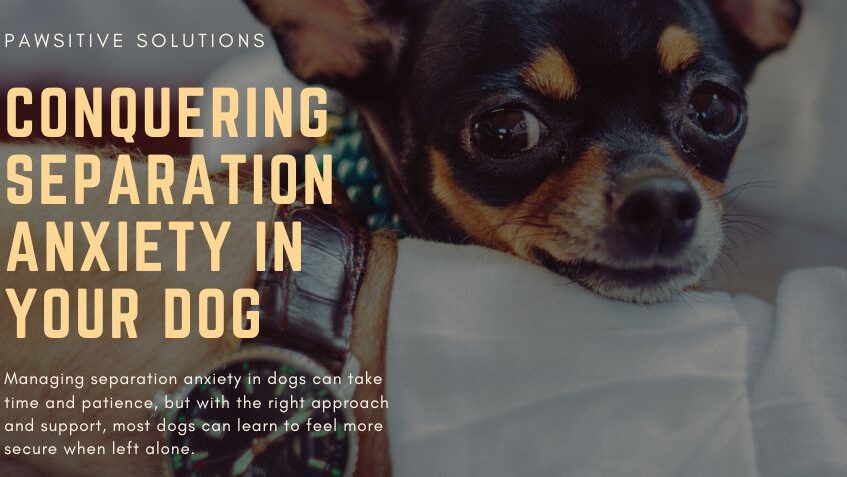Pawsitive Solutions: Conquering Separation Anxiety in Your Dog
Separation anxiety in dogs is a common behavioral issue where a dog exhibits distress or anxiety when separated from their owner or the people they are attached to. This can manifest in various ways, including excessive barking, howling, destructive behavior, pacing, excessive drooling, and even attempts to escape.
Several factors can contribute to separation anxiety in dogs:
- Overattachment: Dogs are social animals and can become overly attached to their owners, especially if they have been through experiences of abandonment or if they have been consistent with their owners.
- Change in Routine: Dogs thrive on routine, so any significant change in their routine or environment, such as a change in living arrangements, a new pet, or a change in work schedules, can trigger separation anxiety.
- Past Trauma: Dogs who have experienced abandonment, neglect, or abuse in the past are more prone to developing separation anxiety.
- Lack of Socialization: Dogs that have not been properly socialized as puppies may develop anxiety when separated from their owners or familiar surroundings.
- Dealing with separation anxiety requires patience, consistency, and sometimes professional help. Here are some tips to help manage separation anxiety in dogs:
- Gradual Desensitization: Gradually accustom your dog to being alone by leaving them alone for short periods at first and then gradually increasing the time.
- Create a Safe Space: Designate a specific area, such as a comfortable crate or a quiet room, where your dog can feel safe and secure when left alone.
- Leave Comforting Items: Leave familiar items such as toys, blankets, or clothing with your scent on them to provide comfort in your absence.
- Exercise and Mental Stimulation: Ensure your dog gets plenty of physical exercise and mental stimulation to help reduce anxiety and promote relaxation.
- Training and Behavior Modification: Consider working with a professional dog trainer or behaviorist to develop a behavior modification plan tailored to your dog’s specific needs.
- Medication: In severe cases, medication prescribed by a veterinarian may be necessary to help manage your dog’s anxiety.
- Avoid Punishment: Never punish your dog for exhibiting signs of separation anxiety, as this can worsen the problem and erode trust between you and your pet.
Remember, managing separation anxiety in dogs can take time and patience, but most dogs can learn to feel more secure when left alone with the right approach and support.
Visit your veterinarian as early recognition, diagnosis, and treatment are essential. Visit your veterinarian as early recognition, diagnosis, and treatment are essential.




